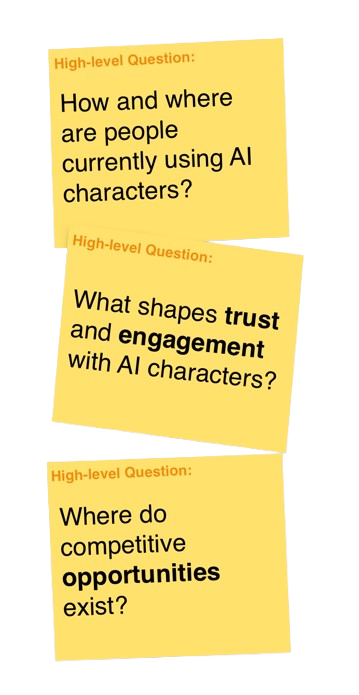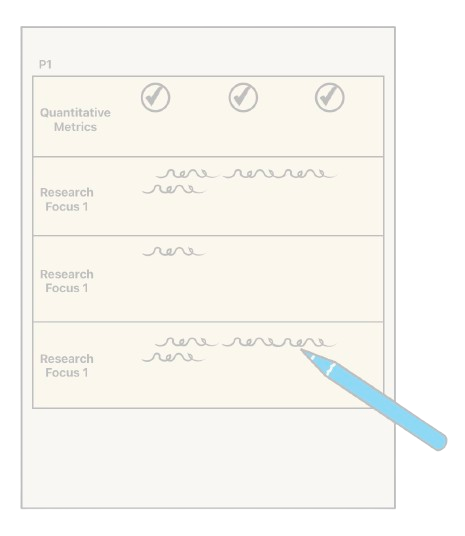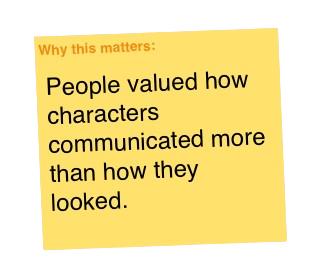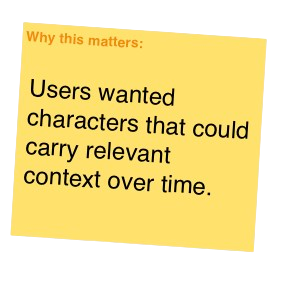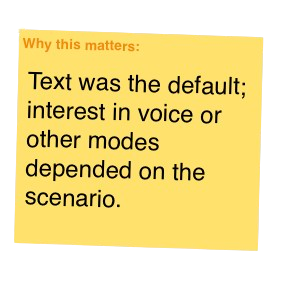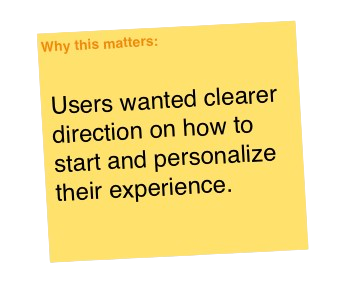
Defining the AI Character Experience Landscape
Role: Co-lead UX researcher | Client: Major technology platform | Methods: Desk research, in-depth interviews | Timeline: 6 weeks
Overview
A major technology platform was exploring how AI “characters” might support practical and relational use cases, but had no existing research in this space.
I co-led a team of two in qualitative research to help the client understand how people currently use AI characters, what shapes user trust and engagement, and identify opportunities to guide future roadmaps.
The project delivered a strategic starting point that informed early roadmap discussions and gave product, research, and design partners a clearer sense of which experience qualities matter to users.
Project Challenges
With no existing research foundation, we had to navigate ambiguity and help the client define the problem space from the ground up.
Because interactions with AI characters are so contextual, interviews required rapid in-session pivots. I created a custom note-taking template to track participant logic and capture nuanced patterns across sessions.
In contrast to most medical studies, this project required a bespoke data collection template that allowed for maximum flexibility but kept us on course.
Research Approach & Methods
This was the client's first dive into the AI-character space, so we built the research program to give them a foundation to stand on.
Phase 1: Desk research to establish baseline knowledge of the competitive landscape and shape a hypothesis-driven interview guide grounded in observable patterns rather than assumptions.
Phase 2: Qualitative interviews to understand how AI characters fit into people’s routines, what makes them engaging, helpful, and what influences trust or long-term use.
Phase 3: Cross-Product Synthesis using the combined insights to create a set of high-level themes to orient product teams and guide early strategic conversations.
Key Themes
1.Interaction quality > visuals
Users cared far more about how AI characters communicated and adapted instead of how characters looked.
Tone, responsiveness, and conversational style were central to perceived value.
2. Continuity drives commitment
Participants valued characters that could reliably maintain relevant information, especially for recurring goals or ongoing topics.
They also wanted straightforward ways to adjust or remove stored details.
3. Simplicity builds trust
Simple, uncluttered interfaces helped users focus and reduced friction, especially during onboarding.
Complex or overly busy surfaces often signaled uncertainty and discouraged deeper use.
4. Modalities depend on context
Text remained the default and most comfortable mode for most users.
Interest in voice or other modalities depended on the use case scenario and the perceived quality of the experience
5. Early guidance is essential
Most platforms offered minimal onboarding, which created a large gap.
Users wanted clearer direction on how to begin, how to personalize interactions, and how to get consistent value from characters.
Impact
1. Influenced Early Roadmap Prioritization
The research shaped early product conversations and helped align teams on several foundational areas:
The importance of simple, focused interaction flows
The role of longer-term context and user control
Scenarios worth exploring for multimodal capabilities
The need for clearer onboarding and guidance pathways
These themes acted as directional signals for where the platform could meaningfully invest next.
2. Provided Cross-Team Strategic Foundations
Although we didn’t produce formal frameworks, the synthesis helped create shared internal language about:
Key qualities that make AI characters engaging
Where context matters
How users approach different modalities
What early users need to get started successfully
These strategic foundations were used across research, design, and product to evaluate new ideas and guide early explorations.
Reflection
This project required balancing open-ended exploration with focused, actionable synthesis. Co-leading the work strengthened my ability to bring structure to ambiguity, interpret complex qualitative input, and guide early-stage product direction.
It also deepened my interest in how people form relationships with intelligent systems—and how design, communication, and context shape those relationships in different roles, whether mentor, therapist, peer, or something entirely new.
